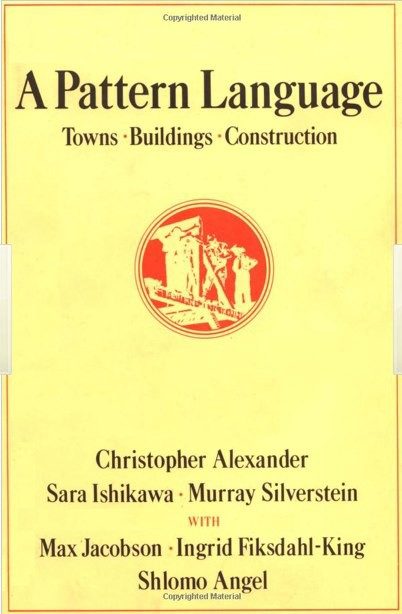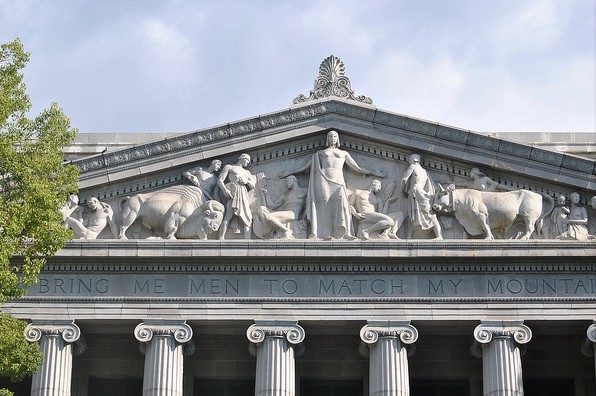California needs a new narrative, and you can write it.
In “Could the ‘Ecotopia’ fantasy actually become reality?” columnist Dan Walters recently speculated that California, Washington, and Oregon are collectively implementing the tenets of Ecotopia, the secessionist eco-state depicted in Ernest Callenbach’s 1975 novel of the same name.

I get the sense that Dan Walters has not read the book recently. Partly, because to summarize it, he quoted several sentences from Wikipedia. But mostly, because I just read it myself.
Here are some things I learned about Ecotopia:
- In Ecotopia, no one works more than 20 hours a week.
- Ecotopia’s population gradually decreases over time.
- Ecotopians mostly live in mini-cities of about 10,000 people, with open space between them.
- Ecotopian businesses are all worker-owned, and there are no big businesses.
- Ecotopians readily accept a much smaller economy as the price of environmental sustainability.
- Ecotopians are culturally homogenous. Most racial and ethnic minorities live in their own nations within Ecotopia. Black folks mostly live in, I kid you not, “Soul Cities.”
- In Ecotopia, the cities have all the power, and the Ecotopian government has to beg them for money.
See the resemblance to modern-day California? Me neither!
And yet, I think Walters is onto something. More than forty years later, “Ecotopia” still drives Californians’ thinking about what we want for our state.
Sometimes, especially with green technology, this is useful. California’s conversion to renewable energy seems to be lifted verbatim from the novel’s pages.
But in matters of scale, the Ecotopian vision falls down hard. One major challenge California faces is excessive vehicle emissions due to long commutes. Addressing this likely requires not getting in tune with the trees, but turning those trees into housing near jobs. And getting that housing built will probably involve a certain amount of our big, bad state government busting local governments’ chops, à la SB 35.
Environmentalism? Certainly, but not of the Ecotopian variety.
The Ecotopian “small is beautiful” mentality also leads us to deny the teeming, populous state that California really is. Exhibit A is our legislature, still with the same number of seats it had in 1880.
And the conceit that, like in the novel, problems will work themselves out through social responsibility and innovation has resulted in some hard lessons. Allowing anyone to opt out of vaccines based on their personal beliefs did not, as it turned out, lead to an informed and empowered populace; it led to measles outbreaks.
The irony here is that “Ecotopia,” as a work of fiction, is utterly un-intimidating. The main character, William Weston, is barely two-dimensional, and the plot is utterly predictable. The novel’s strength lies entirely in its depictions of Ecotopian society.
The other book it most reminds me of is not a work of fiction at all; it is “A Pattern Language,” a 1977 treatise on city planning and architecture, written by Callenbach’s fellow Berkeleyan, Christopher Alexander. Among other things, this book popularized the idea that most buildings more than four stories high are alienating and inhuman.

So why are Californians still, consciously or not, operating from a vision that originated in Berkeley in the 70s? Because we have yet to find a compelling replacement.
“Bring me men to match my mountains,” says the inscription on a building near our Capitol. And so we have, probably more than whoever inscribed it imagined.

What California needs now is mountains to match her multitudes: a broad, lofty vision that we Californians can navigate by, and one day, summit and look beyond.
There are certainly anti-Ecotopian threads out there if we wish to stitch them together. Gavin Newsom and other politicians rightly tout California as one of the world’s most successful models of pluralism. Our state’s ability to grow our economy while shrinking our carbon footprint belies the Ecotopian model of severe sacrifice for environmental sustainability. And the YIMBY movement and others articulate an unapologetic, pro-growth urbanism.
Imagine that California, like Ecotopia, managed to work its way out of the United States, leaving Californians fully free to chart our own course. What course would we chart? Where would we be twenty years from now?
Answer this question in the form of a novel, and California’s next forty years may well belong to your vision.
By Dave Marin, who serves on our Board of Directors. This article originally appeared in Fox & Hounds Daily.
